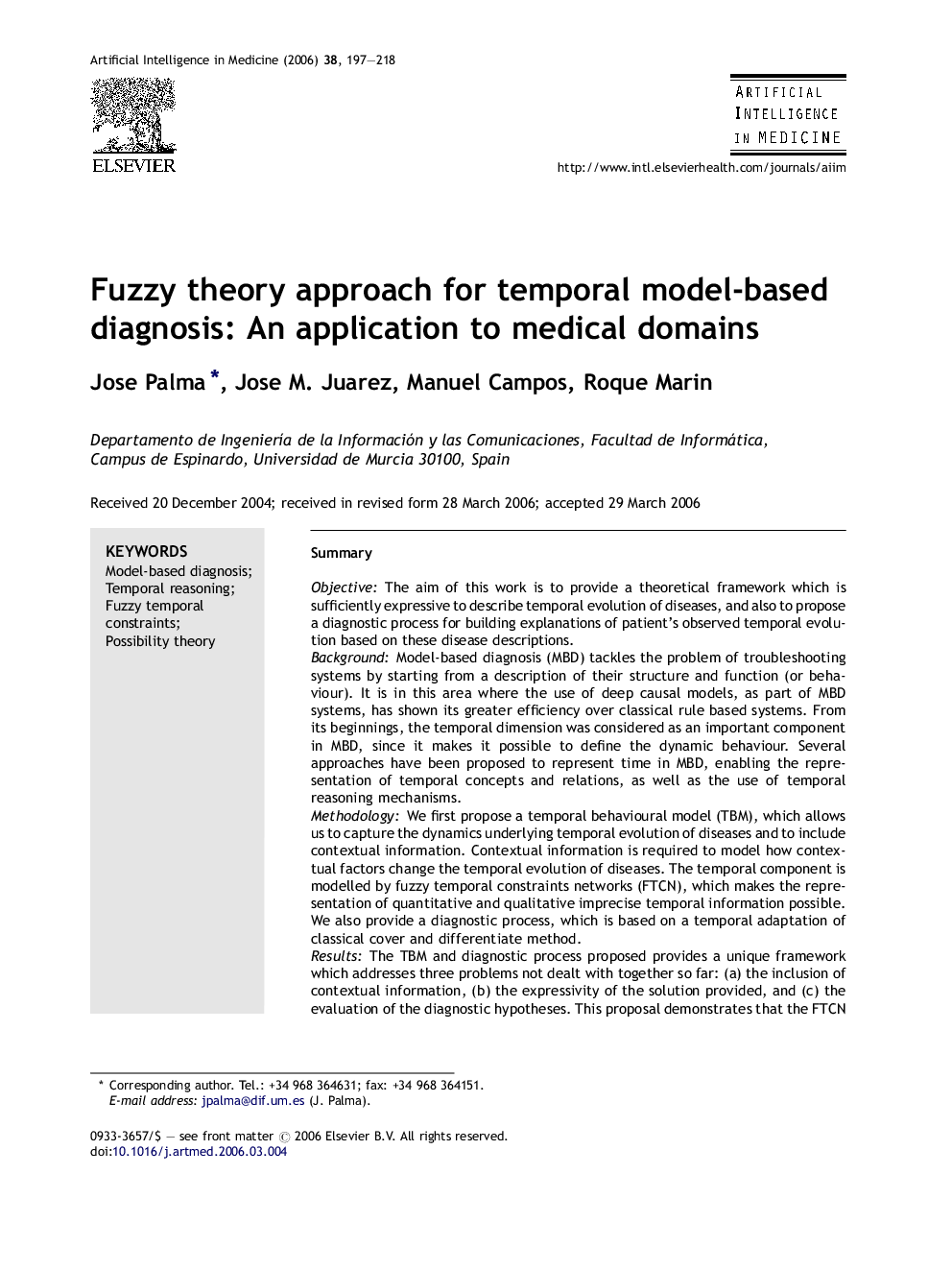| Article ID | Journal | Published Year | Pages | File Type |
|---|---|---|---|---|
| 378197 | Artificial Intelligence in Medicine | 2006 | 22 Pages |
SummaryObjectiveThe aim of this work is to provide a theoretical framework which is sufficiently expressive to describe temporal evolution of diseases, and also to propose a diagnostic process for building explanations of patient’s observed temporal evolution based on these disease descriptions.BackgroundModel-based diagnosis (MBD) tackles the problem of troubleshooting systems by starting from a description of their structure and function (or behaviour). It is in this area where the use of deep causal models, as part of MBD systems, has shown its greater efficiency over classical rule based systems. From its beginnings, the temporal dimension was considered as an important component in MBD, since it makes it possible to define the dynamic behaviour. Several approaches have been proposed to represent time in MBD, enabling the representation of temporal concepts and relations, as well as the use of temporal reasoning mechanisms.MethodologyWe first propose a temporal behavioural model (TBM), which allows us to capture the dynamics underlying temporal evolution of diseases and to include contextual information. Contextual information is required to model how contextual factors change the temporal evolution of diseases. The temporal component is modelled by fuzzy temporal constraints networks (FTCN), which makes the representation of quantitative and qualitative imprecise temporal information possible. We also provide a diagnostic process, which is based on a temporal adaptation of classical cover and differentiate method.ResultsThe TBM and diagnostic process proposed provides a unique framework which addresses three problems not dealt with together so far: (a) the inclusion of contextual information, (b) the expressivity of the solution provided, and (c) the evaluation of the diagnostic hypotheses. This proposal demonstrates that the FTCN formalism provides mechanisms sufficiently expressive to cope with the intrinsic imprecision in the description of diseases’ temporal evolution. The explanation generated provides the user with a complete picture of the temporal evolution of diseases and its causal links, thus allowing the appearance of repeated instances of the same disease through time. Mechanisms are provided which evaluate the credibility of alternative hypotheses, based on possibility theory. A prototype is presented along with a knowledge acquisition tool that guides medical experts in the model building process.ConclusionsIn this paper, we propose a model that tightly couples methods from MBD area with constraint-based temporal reasoning techniques. The proposed model allows us to model complex contextual relationships in a compact way as well as providing solutions expressive enough to be used for decision support purposes. The solution provided conforms a causal network entailing the abnormal observations, including pathophysiological and etiological states. Furthermore, different instances of the same diagnostic hypotheses, located at different time instants, are also possible in the final solution. Finally, we provide an analysis of related and future works.
